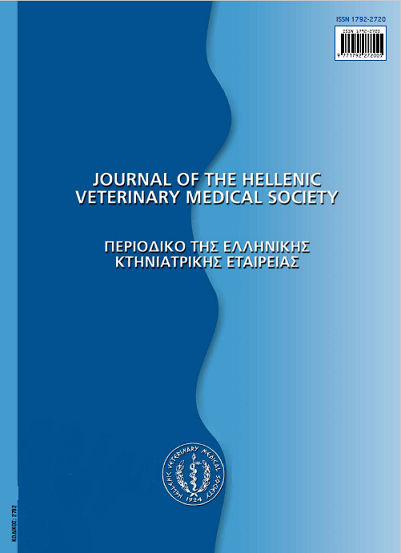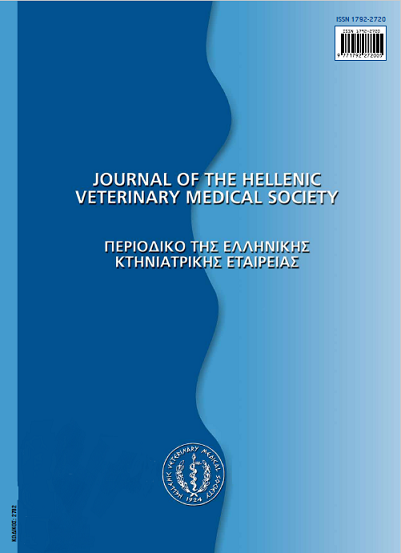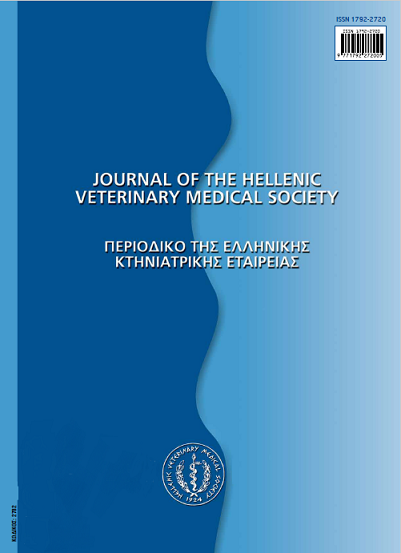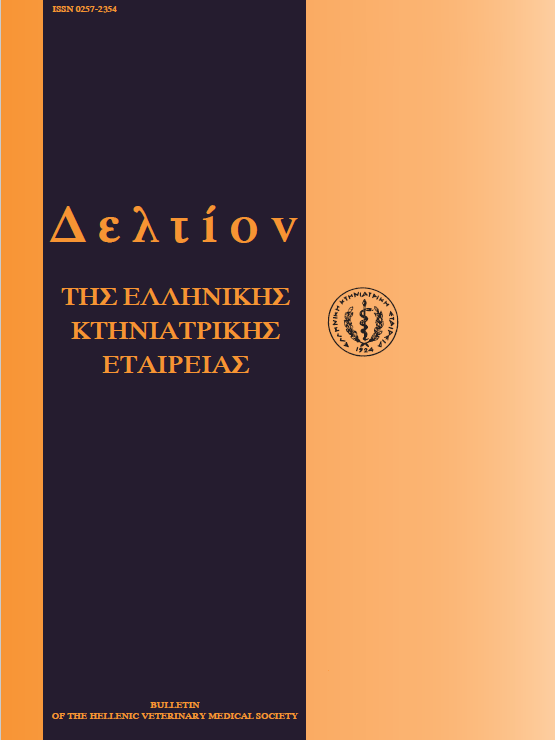Porcine malignant hyperthermia during sevoflurane anaesthasia
Abstract
During a surgical procedure, in a pig, under general anaesthesia with sevoflurane, the animal developed malignant hyperthermia. Malignant hyperthermia was expressed only by a progressive increase of rectal temperature without early symptoms from the cardiopulmonary system. The delayed onset of the malignant hyperthermia may be due to the co-administration of a number of drugs at the pre-anaesthetic phase as well as during the surgical procedure.
Article Details
- Zitationsvorschlag
-
KOSTOMITSOPOULOS (Ν.Γ. ΚΩΣΤΟΜΗΤΣΟΠΟΥΛΟΣ) N. G., BALAFAS (Ε. ΜΠΑΛΑΦΑΣ) E., MANGIARAS (Γ. ΜΑΝΤΖΙΑΡΑΣ) G., PARONIS (Ε. ΠΑΡΩΝΗΣ) E., ALEXAKOS (Π. ΑΛΕΞΑΚΟΣ) P., & KARAYANNAKOS (Π.Ε. ΚΑΡΑΓΙΑΝΝΑΚΟΣ) P. E. (2017). Porcine malignant hyperthermia during sevoflurane anaesthasia. Journal of the Hellenic Veterinary Medical Society, 57(2), 122–126. https://doi.org/10.12681/jhvms.15015
- Ausgabe
- Bd. 57 Nr. 2 (2006)
- Rubrik
- Case Report
Authors who publish with this journal agree to the following terms:
· Authors retain copyright and grant the journal right of first publication with the work simultaneously licensed under a Creative Commons Attribution Non-Commercial License that allows others to share the work with an acknowledgement of the work's authorship and initial publication in this journal.
· Authors are able to enter into separate, additional contractual arrangements for the non-exclusive distribution of the journal's published version of the work (e.g. post it to an institutional repository or publish it in a book), with an acknowledgement of its initial publication in this journal.
· Authors are permitted and encouraged to post their work online (preferably in institutional repositories or on their website) prior to and during the submission process, as it can lead to productive exchanges, as well as earlier and greater citation of published work.







